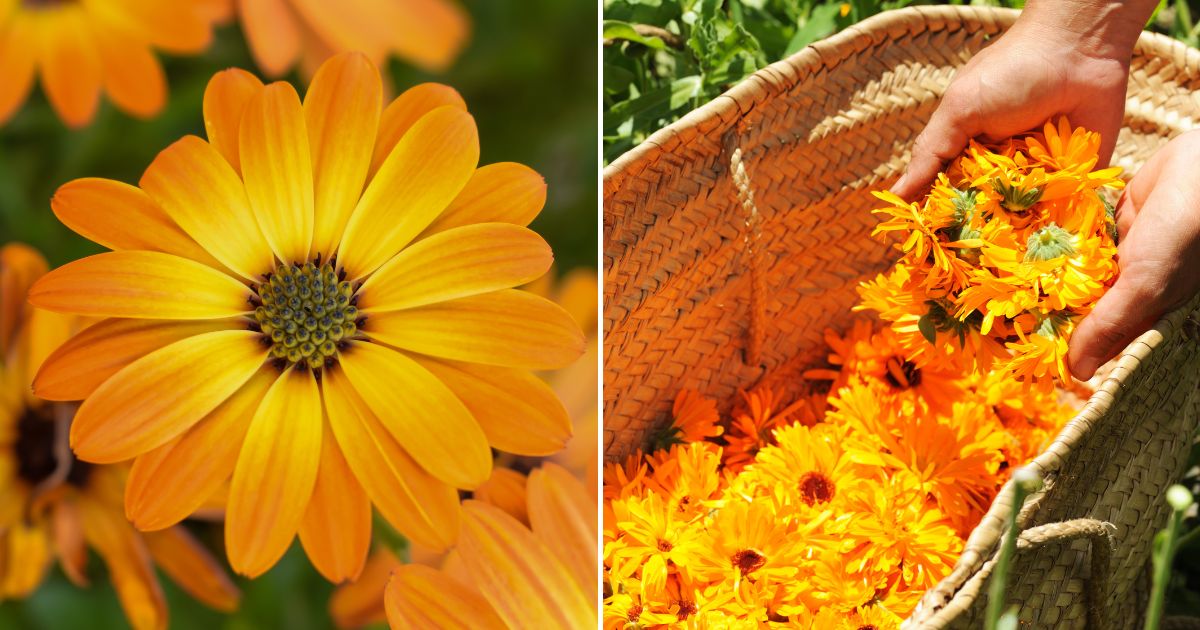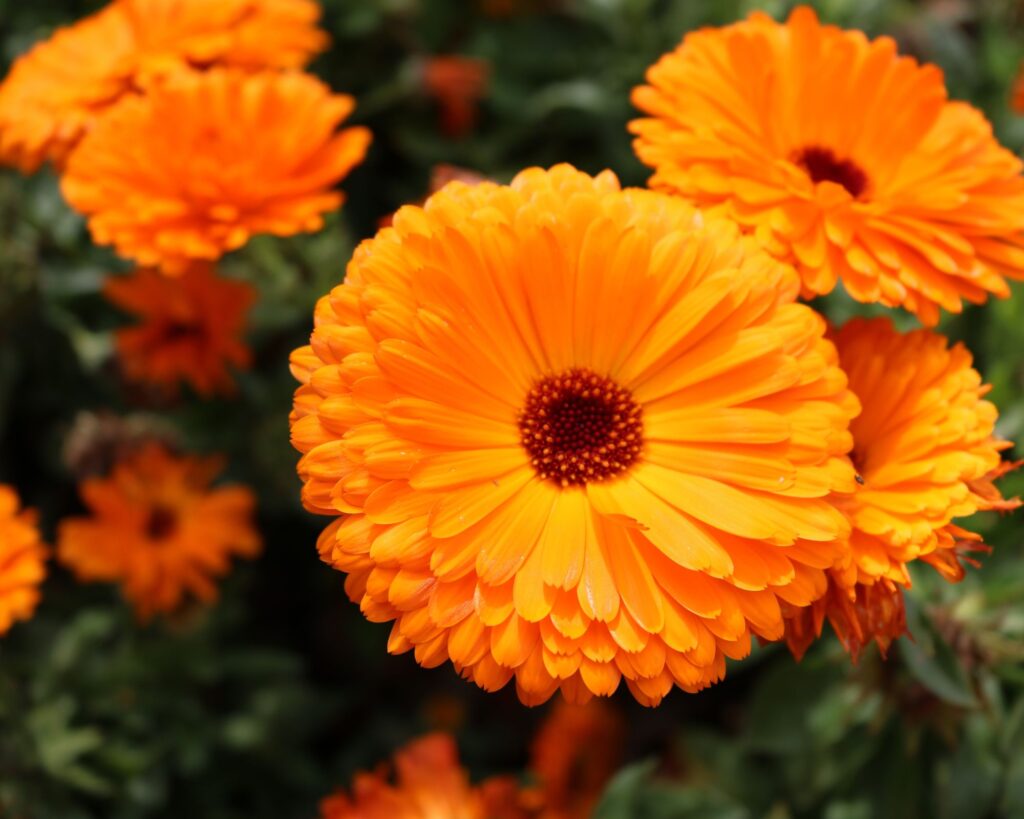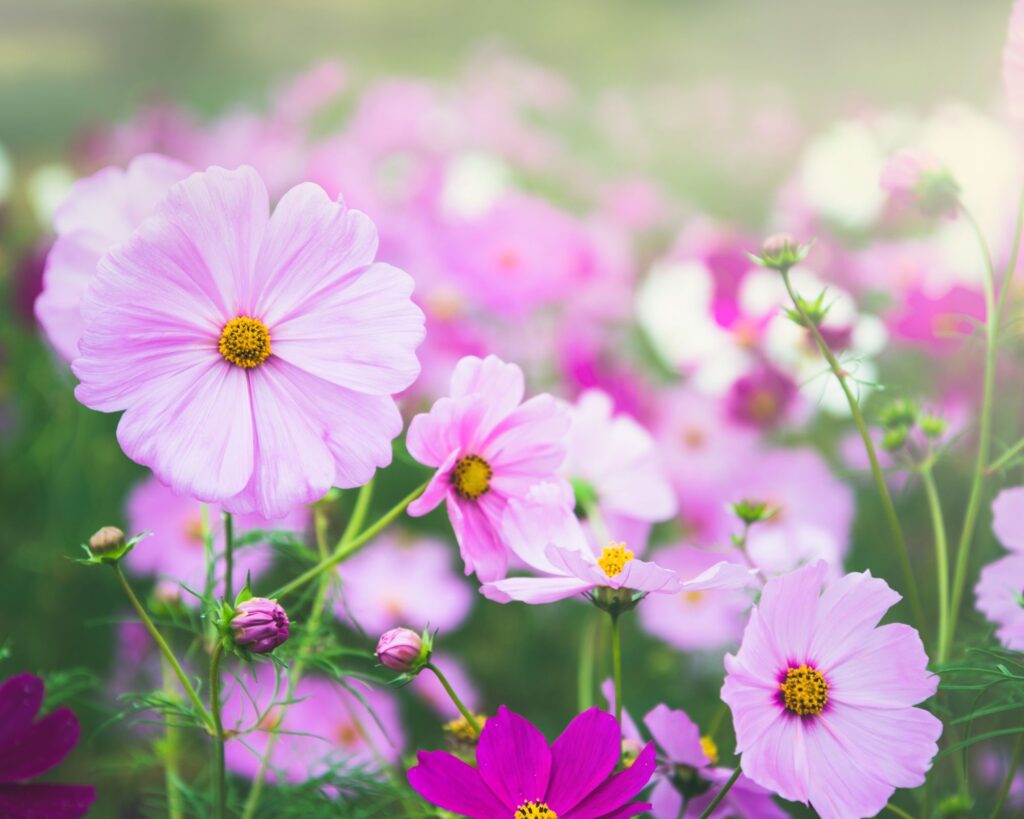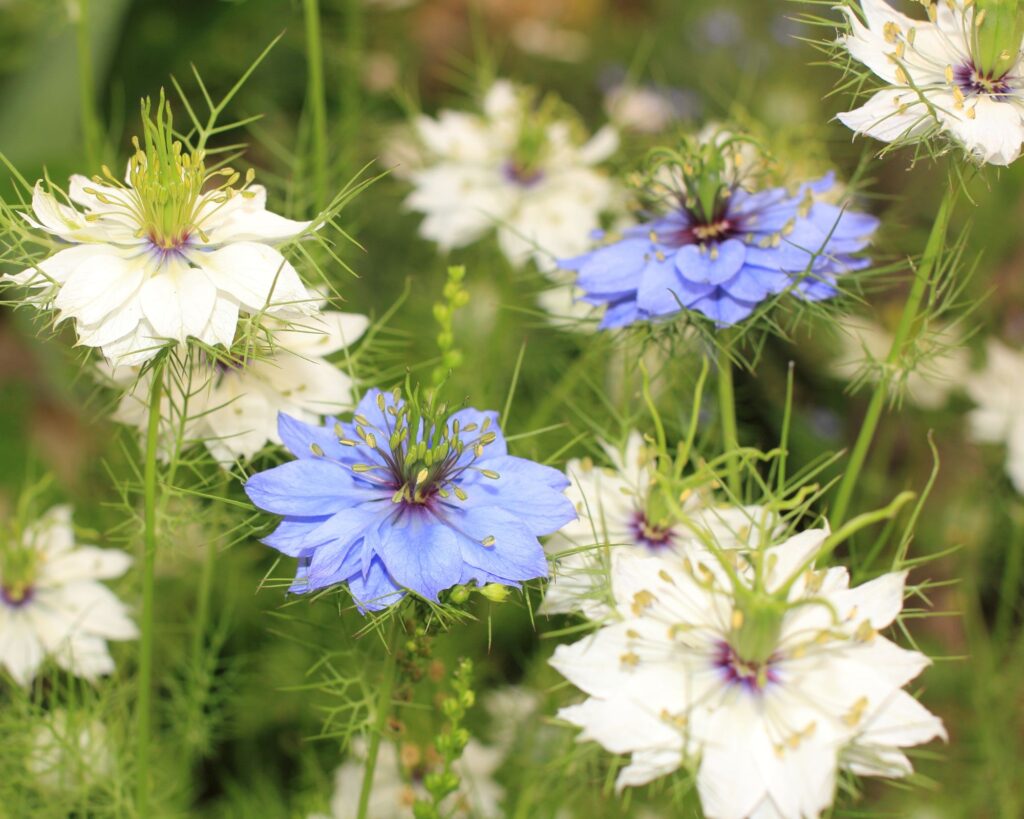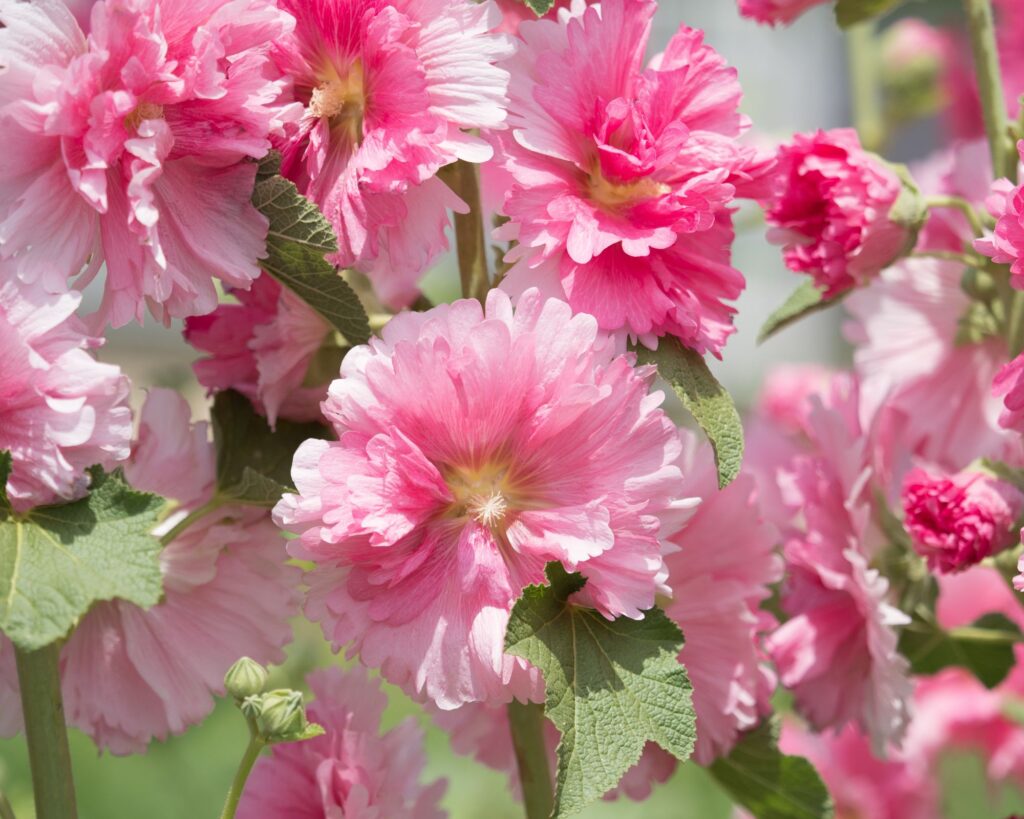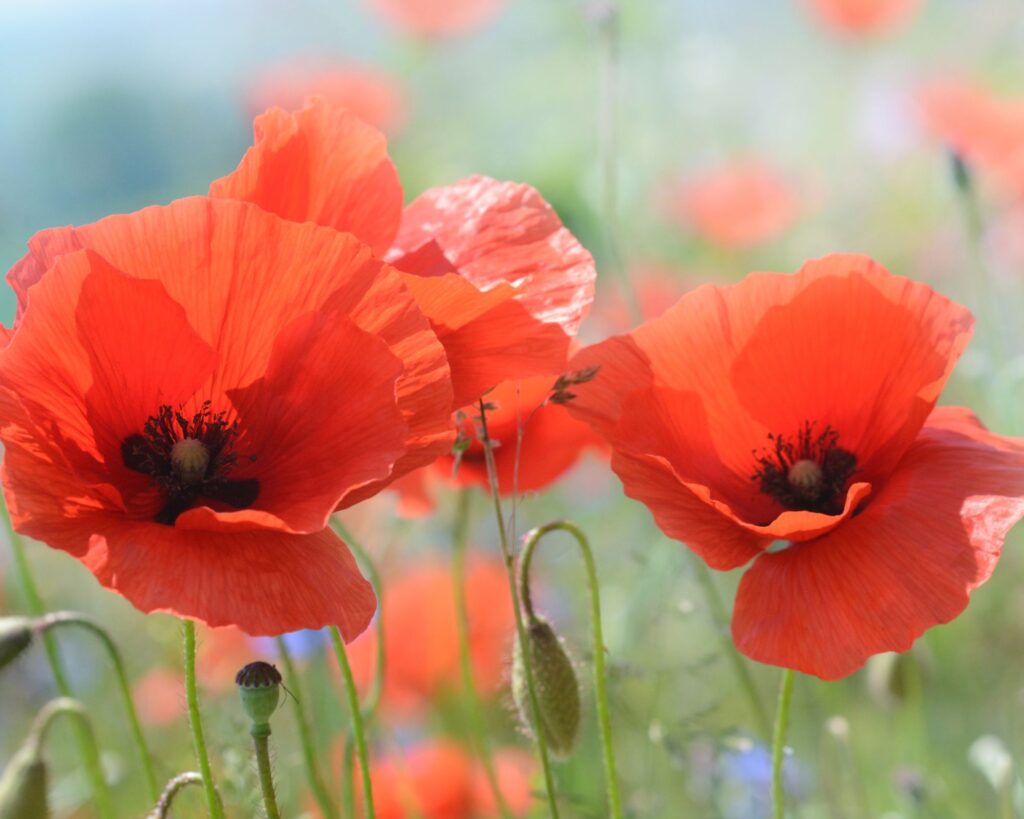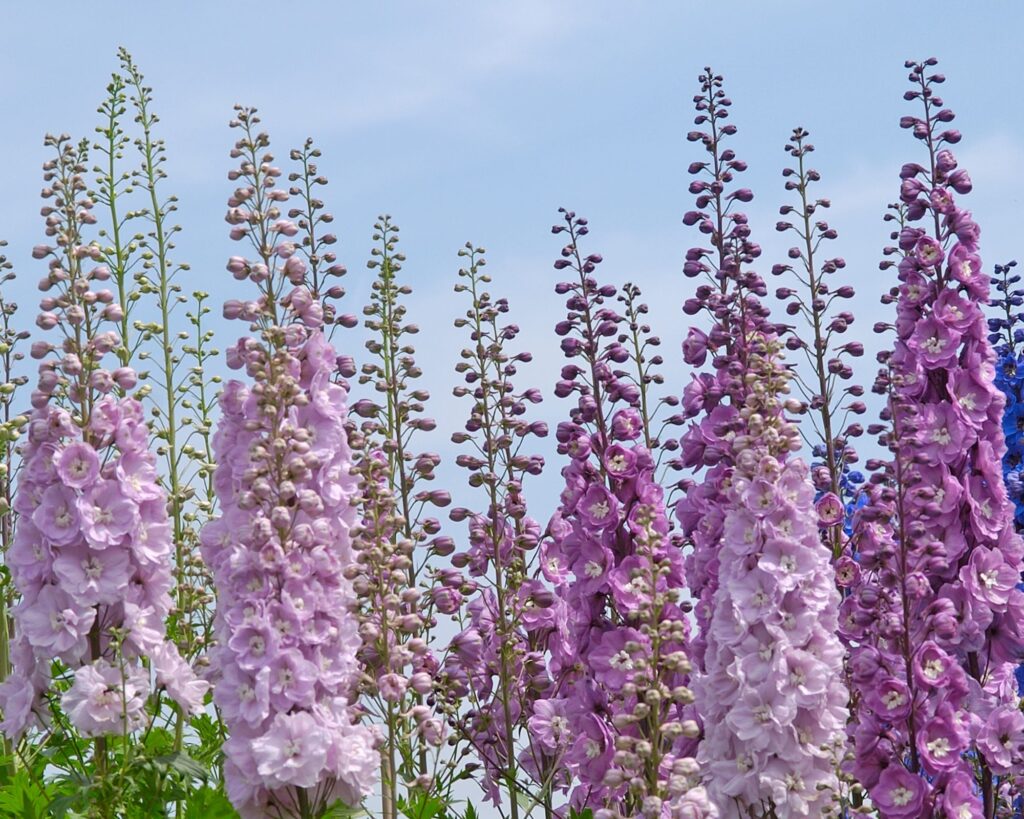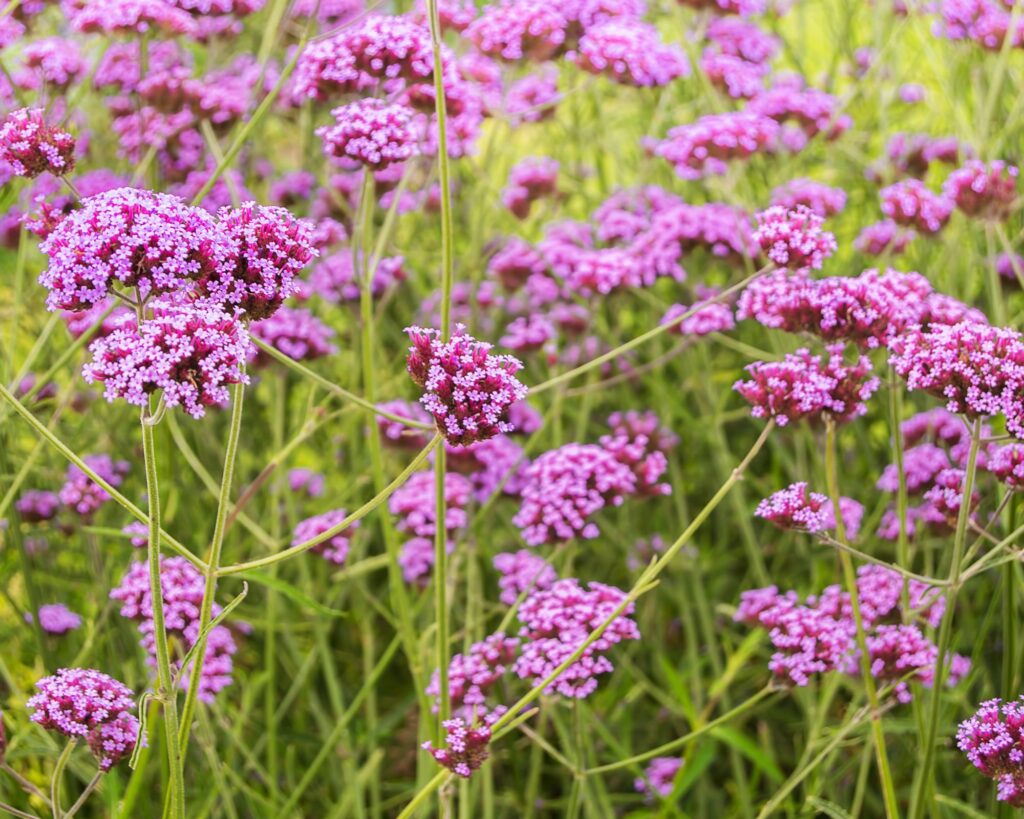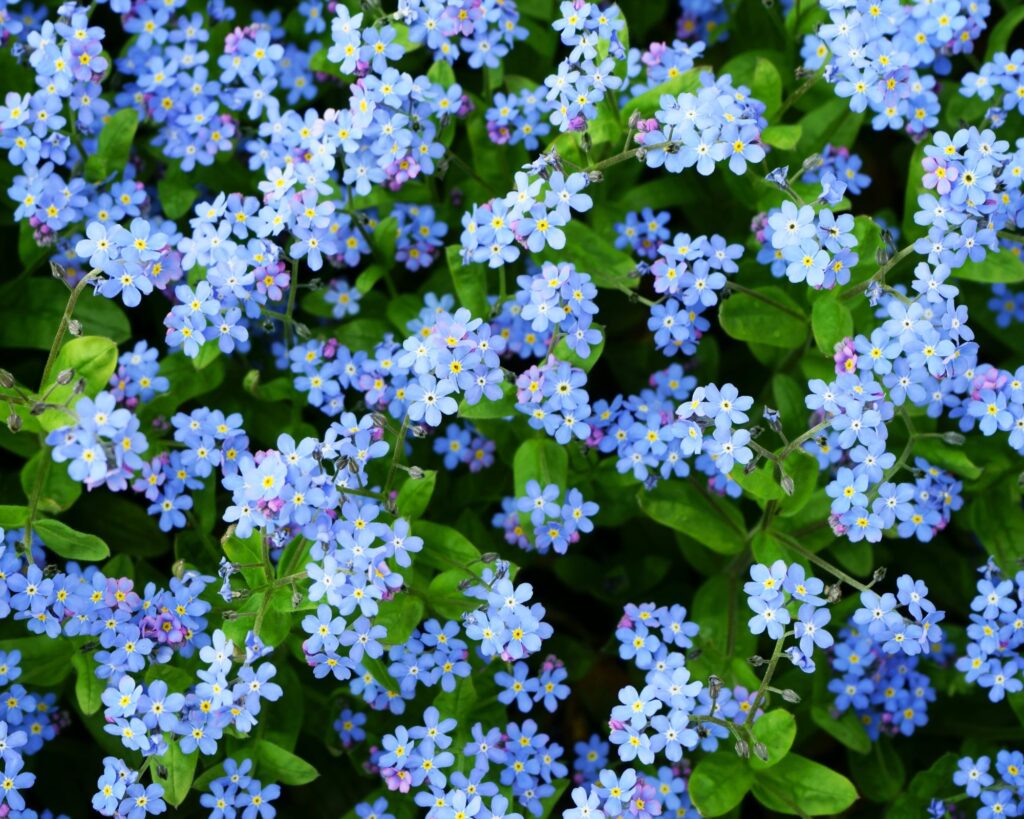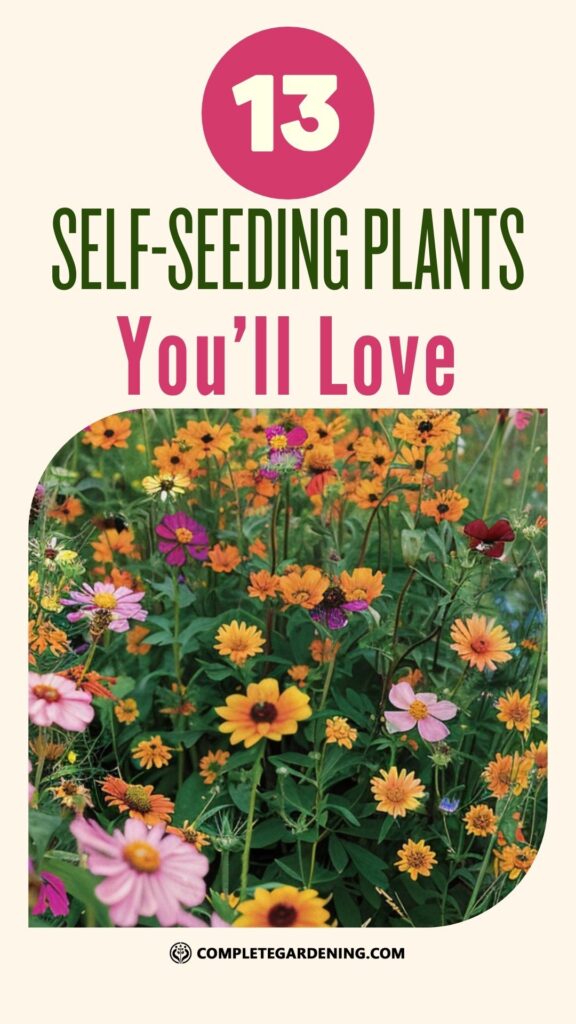Are you tired of spending countless hours planting and replanting to keep your garden looking lively? What if I told you there’s an easier way to maintain a vibrant, dynamic backyard?
Self-seeding plants are your answer. These garden heroes not only add stunning beauty and variety but also reduce your workload.
Join me as we discover 13 amazing self-seeding plants that will spread joy throughout your backyard, transforming it into a colorful, ever-evolving oasis.
1. Calendula (Calendula officinalis)
Calendula, also known as pot marigold, is a versatile and resilient plant renowned for its bright orange and yellow flowers.
These cheerful blooms are not only visually appealing but also attract beneficial insects like bees and butterflies, promoting pollination in your garden.
Calendula thrives in full sun and well-drained soil, making it an easy-to-grow option for both novice and experienced gardeners.
Its seeds mature quickly and disperse easily, ensuring a steady supply of new plants each year.
Additionally, calendula has medicinal properties and can be used in homemade balms and salves.
2. Cosmos (Cosmos bipinnatus)
Cosmos is a delightful annual that brings a burst of color to any garden with its daisy-like flowers in shades of pink, white, and purple.
These plants are incredibly low-maintenance, thriving in poor soil and full sun.
Cosmos self-seeds prolifically, ensuring a constant presence in your garden year after year. They grow tall, with delicate, fern-like foliage that adds a touch of elegance to borders and flower beds.
Besides their aesthetic appeal, cosmos flowers are excellent for cutting and adding to floral arrangements.
3. Foxglove (Digitalis purpurea)
Foxglove is a striking biennial known for its tall spikes of tubular, bell-shaped flowers that come in various shades of pink, purple, and white.
These dramatic blooms add vertical interest to any garden and are particularly attractive to hummingbirds and bees.
Foxglove prefers partial shade and well-drained soil. While it can be toxic if ingested, proper handling and placement can mitigate any risks. Foxglove self-seeds readily, ensuring a continuous display of its stunning flowers.
Its seeds often lie dormant in the soil until conditions are right, leading to pleasant surprises in your garden.
4. Nigella (Nigella damascena)
Nigella, commonly known as love-in-a-mist, is a charming annual that produces delicate blue, pink, or white flowers surrounded by feathery, fern-like foliage.
This plant is incredibly easy to grow and self-seeds prolifically, often appearing in unexpected corners of the garden.
Nigella thrives in full sun to partial shade and well-drained soil. Its unique, seed-filled pods can be dried and used in floral arrangements, adding to its versatility.
Love-in-a-mist is an excellent choice for cottage gardens, where its whimsical appearance fits perfectly.
5. Hollyhock (Alcea rosea)
Hollyhocks are tall, stately biennials or short-lived perennials that produce large, showy flowers in a wide range of colors, including pink, red, yellow, and white.
These plants add height and structure to the garden, making them perfect for borders and backdrops.
Hollyhocks are particularly well-suited to sunny locations with well-drained soil. They self-seed generously, ensuring that their dramatic blooms return year after year.
Hollyhocks are also relatively drought-tolerant once established, making them a resilient addition to your garden.
6. Poppy (Papaver spp.)
Poppies are beloved for their vibrant, papery flowers that come in an array of colors, including red, orange, pink, and white.
Both annual and perennial poppies thrive in well-drained soil and full sun, adding a burst of color to any garden.
Poppies are excellent self-seeders, with their seeds spreading easily and lying dormant until conditions are ideal for germination.
This natural reseeding ensures a continual display of their striking blooms. Poppies also have historical and cultural significance, symbolizing remembrance and peace.
7. Larkspur (Consolida ajacis)
Larkspur, also known as annual delphinium, features tall spikes of flowers in shades of blue, pink, and white.
These plants bring a touch of elegance and height to the garden, thriving in cooler weather and full sun to partial shade.
Larkspur self-seeds freely, often popping up in new locations each year. Its delicate, fern-like foliage adds texture to garden beds and borders.
Larkspur’s flowers are also popular in cut flower arrangements, adding to their appeal.
8. Verbena bonariensis
Verbena bonariensis is a tall, airy perennial that produces clusters of small, lavender-purple flowers atop slender stems.
This plant is a magnet for butterflies and other pollinators, making it a valuable addition to any garden.
Verbena bonariensis thrives in full sun and well-drained soil, self-seeding prolifically in suitable climates.
Its open, airy structure allows it to blend seamlessly with other plants, adding height without overwhelming the garden’s overall design.
This plant is particularly well-suited to naturalistic and meadow-style gardens.
9. Sweet Alyssum (Lobularia maritima)
Sweet Alyssum is a low-growing plant that produces masses of tiny, fragrant flowers in white, pink, or purple.
This plant is perfect for borders, ground cover, and container gardens. Sweet Alyssum thrives in full sun to partial shade and well-drained soil.
It self-seeds readily, often forming dense carpets of blooms that attract beneficial insects like bees and ladybugs.
The sweet fragrance of its flowers adds an extra sensory dimension to the garden, making it a delightful choice for areas near walkways and seating areas.
10. Forget-Me-Not (Myosotis sylvatica)
Forget-Me-Not is a charming biennial or short-lived perennial that produces clusters of small, blue flowers with yellow centers.
These plants are ideal for shaded areas and moist, well-drained soil. Forget-Me-Nots self-seed vigorously, forming dense carpets of blooms that can brighten up the darkest corners of your garden.
Their delicate flowers are a symbol of remembrance and enduring love, adding sentimental value to their visual appeal.
Forget-Me-Nots are also excellent companions for spring bulbs like tulips and daffodils.
11. Coneflower (Echinacea spp.)
Coneflowers, also known as echinacea, are hardy perennials with daisy-like flowers and prominent, cone-shaped centers.
These plants come in various colors, including pink, purple, white, and yellow.
Coneflowers are drought-tolerant and thrive in full sun and well-drained soil. They self-seed easily, ensuring a steady supply of new plants each year.
Coneflowers are not only attractive to pollinators like bees and butterflies but also to birds that feed on their seeds.
Their long-lasting blooms make them a staple in perennial borders and wildflower gardens.
12. Bachelor’s Button (Centaurea cyanus)
Bachelor’s Button, or cornflower, is a hardy annual that produces bright blue, pink, or white flowers. These plants thrive in full sun and well-drained soil, adding a splash of color to any garden.
Bachelor’s Buttons self-seed without much fuss, often appearing in new locations each year. Their flowers are excellent for cutting and adding to floral arrangements.
Bachelor’s Buttons are also known for their historical significance as symbols of delicacy and love, adding an extra layer of charm to their visual appeal.
13. Lupine (Lupinus spp.)
Lupines are striking perennials that produce tall spikes of pea-like flowers in a range of colors, including blue, purple, pink, and white. These plants thrive in well-drained soil and full sun to partial shade.
Lupines are also beneficial for improving soil fertility, as they fix nitrogen in the soil. They self-seed readily, ensuring a continual display of their vibrant blooms.
Lupines are particularly well-suited to cottage gardens and wildflower meadows, where their bold, architectural form adds visual interest.
Incorporating self-seeding plants into your backyard garden is a wonderful way to create a dynamic, low-maintenance landscape that evolves and thrives with minimal intervention.
These 13 self-seeding plants offer a diverse array of colors, shapes, and textures, ensuring that your garden remains vibrant and full of life year after year.
By choosing plants that are well-suited to your local climate and soil conditions, you can enjoy a flourishing garden with the added benefit of supporting local wildlife, including pollinators and birds.
Whether you’re a seasoned gardener or just starting out, these self-seeding plants provide an easy and rewarding way to cultivate a beautiful, ever-changing garden.
